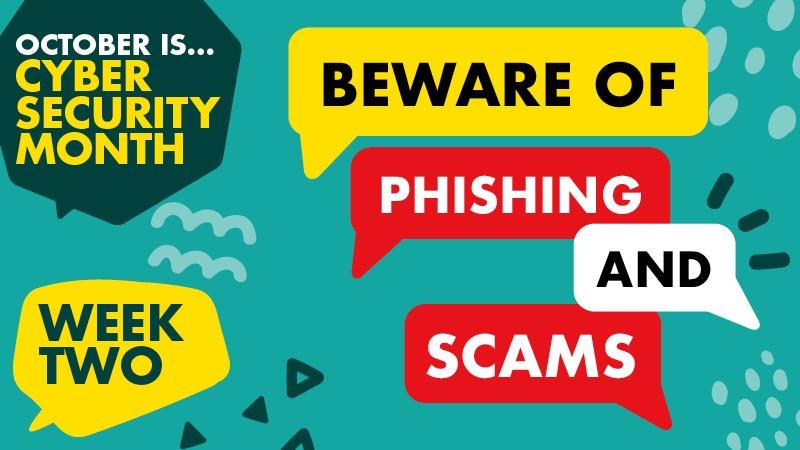October is Cyber Security Month. We want to share with you some tips on how to keep safe when working online. This week we’ll cover what is phishing and how to protect yourself from it.

What is Phishing?
Phishing is when attackers attempt to trick users into doing 'the wrong thing', such as clicking a fraudulent link that will download malware or direct them to a dodgy website.
Phishing emails are getting more clever, more realistic, and more frequent. Spam and email filters do some of the work but will never be fully effective, so it’s up to each of us to read the context of messages and look for anything suspicious.
There are useful tips below, to help you spot a Phishing or fake email, but three key items to look out for are:
- Urgency
Using tight deadlines to create a sense of urgency that distracts you from the rest of the message and pressures you into acting quickly.
- Authority
Using the authority of the sender, such as by pretending to be a senior executive, trusted colleague or reliable company, to convince you that the message comes from a trustworthy source.
- Imitation
Exploiting 'normal' business communications, processes, and daily habits to trick you into reacting to a message. Check who the email is addressed to, if it's 'friend' or 'valued customer', then this might be because the sender doesn't know you.
All colleagues and student Microsoft 365 accounts are continuously monitored for suspicious activity. If an account is suspected of being compromised, it is immediately disabled and the IT Service Desk will contact the owner of the account.
If you have a Microsoft Outlook University mailbox, you can report through the phishing button.
Don't hesitate to ask for guidance or support when something feels suspicious, unexpected or unusual. Please contact the IT Service Desk straight away if you are at all worried using calling (+44) 020 7915 5488 or email [email protected].


